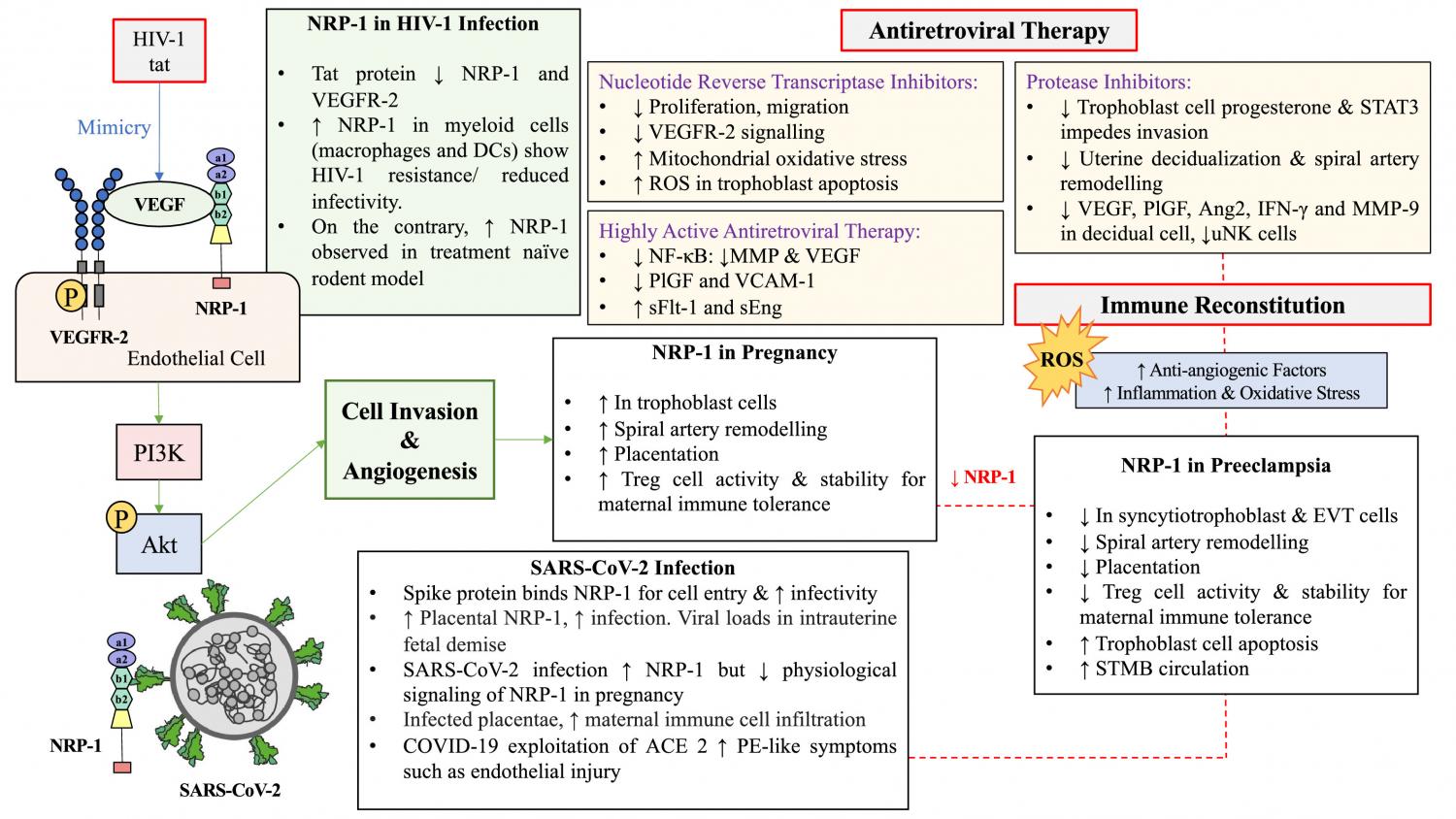
This review explores the role of transmembrane neuropilin-1 (NRP-1) in pregnancy, preeclampsia (PE), human immunodeficiency virus type 1 (HIV-1) and severe acute respiratory syndrome coronavirus 2 (SARS-CoV-2) infections. Since these conditions are assessed independently, this review attempts to predict their comorbid clinical manifestations. Dysregulation of NRP-1 contributes to the pathogenesis of PE by (a) impairing vascular endothelial growth factor (VEGF) signaling for adequate spiral artery remodeling and placentation, (b) inducing syncytiotrophoblast (ST) cell apoptosis and increasing ST-derived microparticle circulation and (c) by decreasing regulatory T cell activity predisposing maternal immune intolerance. Although NRP-1 is upregulated in SARS-CoV-2 placentae, its exploitation for SARS-CoV-2 internalization and increased infectivity may alter angiogenesis through the competitive inhibition of VEGF. The anti-inflammatory nature of NRP-1 may aid its upregulation in HIV-1 infection; however, the HIV-accessory protein, tat, reduces NRP-1 expression. Upregulated NRP-1 in macrophages and dendritic cells also demonstrated HIV-1 resistance/reduced infectivity. Notably, HIV-1-infected pregnant women receiving antiretroviral therapy (ART) to prevent vertical transmission may experience immune reconstitution, impaired decidualization, and elevated markers of endothelial injury. Since endothelial dysfunction and altered immune responses are central to PE, HIV-1 infection, ART usage and SARS-CoV-2 infection, it is plausible that an exacerbation of both features may prevail in the synergy of these events. Additionally, this review identifies microRNAs (miRNAs) mediating NRP-1 expression. MiR-320 and miR-141 are overexpressed in PE, while miR-206 and miR-124-3p showed increased expression in PE and HIV-1 infection. Additionally, miR-214 is overexpressed in PE, HIV-1 and SARS-CoV-2 infection, implicating treatment strategies to reduce these miRNAs to upregulate and normalize NRP-1 expression. However, inconsistencies in the data of the role and regulation of miRNAs in PE, HIV-1 and SARS-CoV-2 infections require clarification. This review provides a platform for early diagnosis and potential therapeutic intervention of PE, HIV-1, and SARS-CoV-2 infections independently and as comorbidities.
